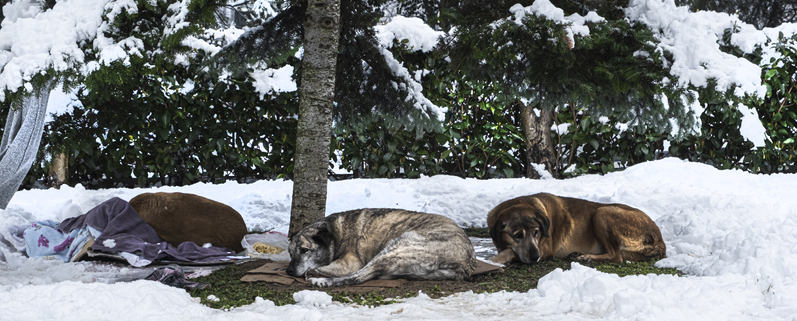Cold Nights and Canines: The Dangers of Dogs Sleeping Outside in Freezing Weather
As the temperatures drop and winter’s chill sets in, it’s crucial to
consider the well-being of our furry companions. While dogs are
equipped to handle various weather conditions, sleeping outside in
freezing weather can pose significant dangers to their health and
safety. Here, we’ll explore the risks associated with exposing dogs to
extreme cold and guide how to ensure their comfort and safety during
winter.
One of the primary concerns with dogs sleeping outside in freezing
weather is the risk of hypothermia. Like humans, dogs can suffer from
dangerously low body temperatures when exposed to freezing
temperatures for extended periods. Smaller or short-haired breeds are
especially vulnerable. Symptoms of hypothermia in dogs include
shivering, lethargy, and, in severe cases, loss of consciousness.
Providing shelter and insulation, such as blankets or heated pads, is
crucial if dogs must spend time outdoors in cold weather.
Another concern is frostbite, when a dog’s extremities, like their
ears, paws, or tail, are exposed to freezing temperatures. Frostbitten
areas can become painful, swollen, and even necrotic. To prevent
frostbite, ensure your dog has access to a warm, dry shelter, and
consider using protective clothing like dog boots to keep their paws
warm and dry.
In conclusion, while some dogs may enjoy romping in the snow, sleeping
outside in freezing weather is unsuitable for most breeds.
Prioritizing your dog’s safety and comfort during the winter months is
essential. Bring them indoors, provide adequate shelter and warm
bedding, and ensure they have protection from the cold. Taking these
precautions ensures your furry friend stays happy and healthy during
the chilly winter season.



